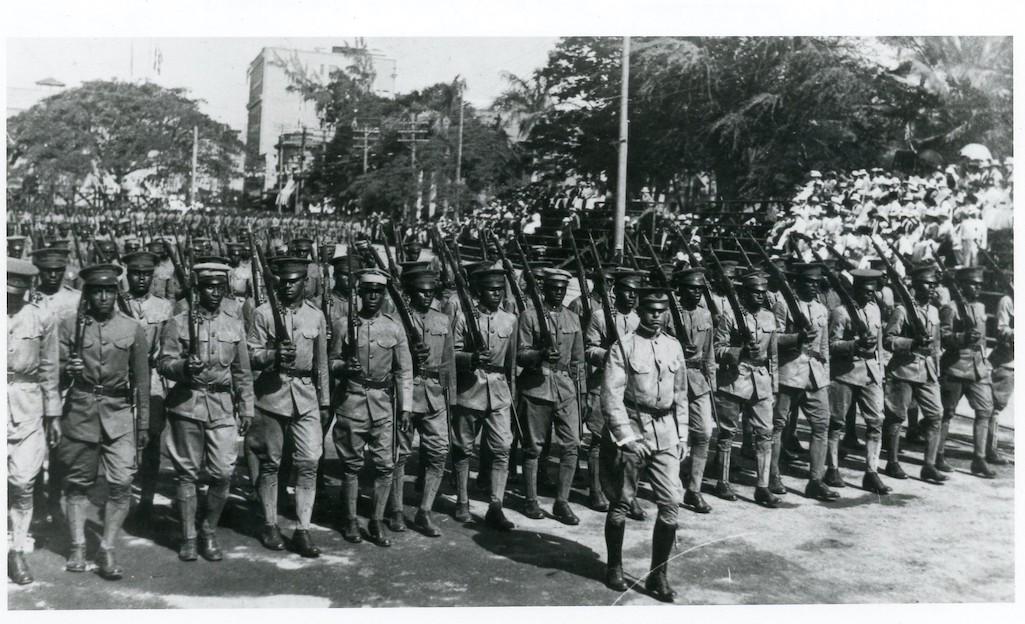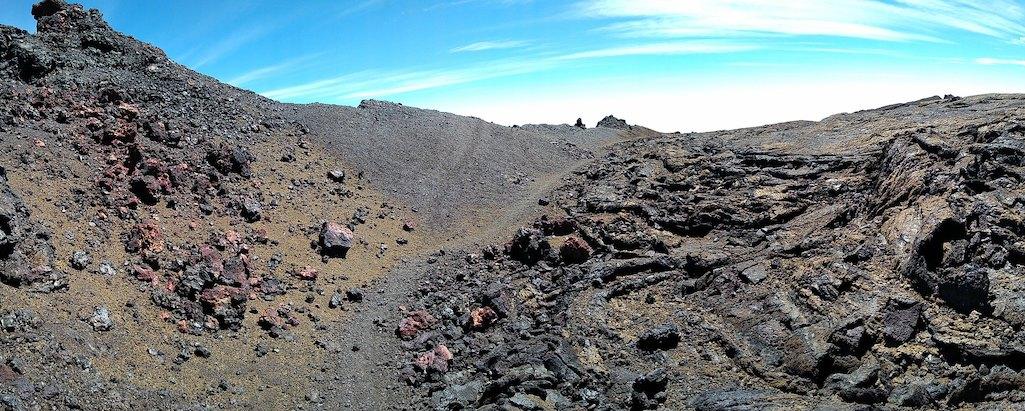
Members of the Buffalo Soldiers stationed in Hawai'i toiled in their spare time to build a 30-mile-long trail through lava in Hawai'i Volcanoes National Park.
Working with 12-pound hammers, often in pouring rain, the soldiers from the U.S. Army's 25th Infantry worked patiently to forge a 30-mile trail through the sharp lava rock fields to link the summits of Kīlauea and Mauna Loa in Hawai'i Volcanoes National Park. It was early in the 20th century, and the trail builders were members of the Buffalo Soldiers.
A Buffalo Soldiers page and podcast on the park website reveals how soldiers from the U.S. Army’s 25th Infantry contributed to the park. The men, who were stationed at Schofield Barracks on Oʻahu, measured lava within the summit of Kīlauea volcano and were among the first to stay at Kilauea Military Camp. But perhaps most notably, they built that high-elevation trail through unforgiving lava rock that connects the volcanic summits of Kīlauea and Mauna Loa.
“It’s a perfect time for us to tip our flat hats in honor of some amazing men, who literally helped shape the National Park Service, including Hawaiʻi Volcanoes National Park,” said Ranger Dean Gallagher. “Despite segregation and racial discrimination that continued after the Civil War, these men dedicated their lives to serving their country. What’s more, the Buffalo Soldiers who built the trail volunteered their time.”
Dean and park archaeologist Summer Roper Todd collaborated on the new 18-minute podcast that recaps the incredible contributions of the Buffalo Soldiers, and shares details from a new National Park Service archaeological survey titled With 12-Pound Hammers and Gunny Sacks: Buffalo Soldiers and the 1915 Trail to the Mauna Loa Summit.

Members of Company H assisting Dr. Thomas A. Jaggar with measuring the depth of the lava lake in Halema'uma'u with large iron pipe, 1917/USGS
The founder of the Hawaiian Volcano Observatory, Dr. Thomas A. Jaggar, sought construction of the trail so geologists could more easily access eruptions at the summit of Mauna Loa. Honolulu businessman Lorrin Thurston, an advocate for creating the national park along with Jaggar, enthusiastically supported the trail as a way to boost tourism. By September 1915, the 25th Infantry’s Company E announced its men would take leave, travel by steamship to the island of Hawaiʻi, and build the trail.
Building the Buffalo Soldiers Trail (now called Mauna Loa Trail) from the 4,000-foot summit of Kīlauea to the 13,677-foot summit of Mauna Loa was no easy task. The soldiers had to break down rough sections of ‘aʻā and pāhoehoe lava flows with 12-pound hammers, pack the broken rock in gunny sacks, carry them up to a quarter-mile and line the trail. They did not use pack animals. Add in the high elevation, primitive camping conditions, and record rainfall, and it doesn’t sound like much of a vacation. Yet morale was high.
The moniker “buffalo soldiers” was given to the men by Native Americans as a sign of respect. One account says it was because the men were strong and rugged like buffalos. Another account says it’s because the soldiers’ hair was similar to buffalo fur, and yet another references the hides they wore in winter. The Tenth Calvary of the Buffalo Soldiers even adopted the bison symbol (buffalo) into their regimental crest.

The Mauna Loa Trail, once known as the Buffalo Soldiers Trail/NPS



Comments
Thanks for sharing this interesting history of black American involvement in the development of this National Park. I would love to see more on the history of the staffing of the National Park Service. I wonder how and why did the NPS staffing system develop to discriminate in hiring so most staff are white and nonwhites are mostly exculded from the NPS?